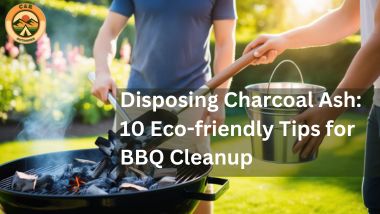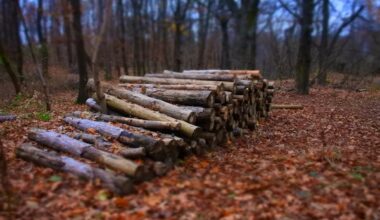Can’t keep your eyes off your kids for fear of playground safety? Here we go beyond slides and swings to make them safer, more comfortable, and eye-catching. Yep! We’re turning the focus on an often overlooked aspect – playground bedding.
Playground bedding is not just about aesthetics; it’s a safety feature that reduces injury risks. Filled with unlimited choices from rubber mulch to engineered wood fiber, finding the perfect fit may seem like searching for a needle in a haystack. But don’t worry, we’ve got you covered!
Brace yourself as we delve deeper into this subject: exploring different types of best bedding for playgrounds and elaborately discussing them further on. Just imagine how enlightened you’ll feel by the end! So buckle up folks because things are about to get interestingly informative!

The Best Bedding for Playground Options
1. Rubber Mulch: Benefits and Drawbacks
When it comes to playground safety, rubber mulch is a popular choice among many parents and schools. One of the biggest benefits of using rubber mulch as bedding for playgrounds is its shock-absorbing properties.
This soft surface can cushion falls, reducing the risk of injuries from accidents that are bound to happen when children are playing. Additionally, rubber mulch is an eco-friendly option as it is made from recycled materials such as old tires.
However, there are also drawbacks associated with using rubber mulch in playgrounds. It can get extremely hot during summer months, potentially causing burns on sensitive skin when children come into direct contact with it.
Another downside is that rubber mulch tends to decompose over time and may need regular topping up or replacement.
2. Engineered Wood Fiber: Pros and Cons
Another popular choice for playground flooring options is engineered wood fiber (EWF). This material consists of wood chips that have been specifically designed to provide a safe surface for children’s play areas.
EWF has excellent shock absorption abilities, making it ideal for preventing injuries from falls.
One major advantage of EWF is its natural appearance which blends well with outdoor surroundings. It provides a more aesthetically pleasing look compared to other artificial options like rubber mulch or poured-in-place rubber surfaces.
Nevertheless, one drawback worth mentioning about engineered wood fiber surfaces is their maintenance needs. EWF requires regular raking and leveling to ensure an even surface free from hazards like rocks or debris that could cause trips or falls.
3. Poured-In-Place Rubber: An In-depth Look at its Advantages and Disadvantages
Poured-in-place (PIP) rubber surfacing offers numerous advantages when used as bedding for playgrounds. This type of rubber flooring is highly durable and provides excellent protection against injuries.
It offers a seamless, non-slip surface that allows children to run and play without the worry of slipping or tripping.
PIP rubber surfaces also come in a variety of vibrant colors, allowing for endless design possibilities. This can help create visually appealing play areas that are attractive to children.
However, one downside to consider with PIP rubber is its initial cost. The installation process requires professional expertise and can be more expensive compared to other options like rubber mulch or pea gravel.
4. Sand as Playground Bedding: Analysis of Safety and Maintenance
Sand has long been used as a traditional bedding material for playgrounds due to its affordable cost and availability. Sand provides natural cushioning when falls occur, reducing the risk of serious injuries.
Maintenance-wise, sand does require regular cleaning as it tends to get dirty easily from dust, debris, or even animal waste if located near grassy areas. It may also need occasional leveling to ensure an even surface.
However, there are certain safety considerations associated with using sand in playgrounds. For younger children who tend to put objects in their mouths, swallowing sand can lead to health issues if it contains harmful contaminants such as bacteria or toxins.
5. Pea Gravel Use in Playgrounds: Safety Considerations and Maintenance Needs
Pea gravel is another popular option for outdoor play area surfaces due to its affordability and accessibility. Its small size allows for easy movement underfoot while still providing enough shock absorption properties when falls occur.
One major advantage of using pea gravel is its low maintenance needs compared to other materials like sand or wood chips. It does not require regular raking or leveling but may need occasional top-ups due to displacement caused by heavy use over time.
However, some safety considerations should be taken into account when using pea gravel in playgrounds. Since it is a loose material, there is a risk of children throwing or ingesting the gravel, which can lead to choking hazards.
Comparison of Cost Efficiency Across Different Bedding Materials
When considering playground bedding materials, cost efficiency is an important factor to consider.
Rubber mulch and poured-in-place rubber surfaces tend to be more expensive initially due to their professional installation requirements. On the other hand, options like sand or pea gravel are more affordable in terms of both purchase and maintenance costs.
It’s essential to weigh the initial investment against long-term durability when deciding on a playground bedding material.
While some options may have a higher upfront cost, they might prove to be more economical over time due to their longevity and minimal maintenance needs.
Consideration for Relevant Factors (Special Needs, Age, etc.) when Choosing Playground Bedding Material
Choosing the best bedding for a playground goes beyond just considering safety and cost efficiency. Factors such as age groups using the play area should also be taken into account.
Younger children may benefit from softer surfaces like rubber mulch or engineered wood fiber that provide extra impact absorption.

Special needs accessibility should also be considered when selecting playground bedding material. Surfaces that are wheelchair-friendly with smooth transitions between levels can make playtime inclusive for all children.
Furthermore, cleaning and replacement requirements must not be overlooked. Some materials like sand or wood chips may need regular cleaning or leveling while others require occasional topping up over time.
Conclusion
Selecting the best bedding for playgrounds involves careful consideration of various factors such as safety features, maintenance needs, and budget constraints.
By evaluating options like rubber mulch, engineered wood fiber, rubber surfaces, sand, and pea gravel, you can make an informed decision based on your specific requirements.
Remember to think about the age groups using the playground, the accessibility needs for special needs children, cleaning and replacement requirements, and, of course, your budget.
With the right playground bedding material in place, you can create a safe and enjoyable play environment for children to explore, learn, and have fun.
Frequently Asked Questions
Q: What is the best ground cover for a playground?
A: When it comes to choosing a ground cover for your playground, there are several options to consider. Some of the best choices include pea gravel, engineered wood fiber, rubber playground mulch, artificial turf, and rubber tiles.
Q: Why is choosing the right ground cover important for a playground?
A: Selecting the appropriate ground cover is crucial for playground safety. It helps cushion falls and provides a soft landing surface, minimizing the risk of injuries.
Q: What are the advantages of pea gravel as a ground cover option?
A: Pea gravel is a popular choice for playgrounds because it is affordable, easy to install, and offers good drainage. It also provides a natural look and requires minimal maintenance.
Q: What are the pros and cons of using engineered wood fiber as a playground ground cover?
A: Engineered wood fiber is a durable and ADA-compliant option for playgrounds. It offers excellent shock absorption and is resistant to rot and pests. However, it may not be the best choice for areas with heavy rainfall, as it can become muddy.
Q: What should I consider when using rubber playground mulch as a ground cover?
A: Rubber playground mulch is a safe and low-maintenance option. It is made from recycled tires and provides excellent shock absorption. However, it can get hot under direct sunlight and may not be suitable for areas with high temperatures.
Q: Is artificial turf a good option for a playground?
A: Artificial turf is a popular choice for playgrounds due to its low-maintenance nature and durability. It offers a clean and consistent surface and is wheelchair accessible. However, it can be more costly than other ground cover options.
Q: Are there any safety regulations I should consider when selecting a ground cover for my playground?
A: Yes, the Consumer Product Safety Commission (CPSC) provides guidelines for playground safety. It is important to choose a ground cover that meets these standards to ensure the safety of children using the playground.
Q: Can I use regular wood mulch as a ground cover for my backyard play area?
A: Regular wood mulch can be used as a ground cover for backyard play areas. However, it may require regular maintenance, such as replenishing the mulch and ensuring it stays level.
Q: What are unitary materials for playground ground cover?
A: Unitary materials refer to ground cover options that are poured or installed as a solid surface. These include poured rubber and rubber tiles. Unitary materials offer a seamless and cushioned surface, reducing the risk of trips and falls.
Q: What is the best playground ground cover material for an outdoor play structure?
A: The best ground cover material for an outdoor play structure depends on various factors such as budget, preferences, and safety requirements. However, popular choices include engineered wood fiber, rubber playground mulch, and artificial turf.

